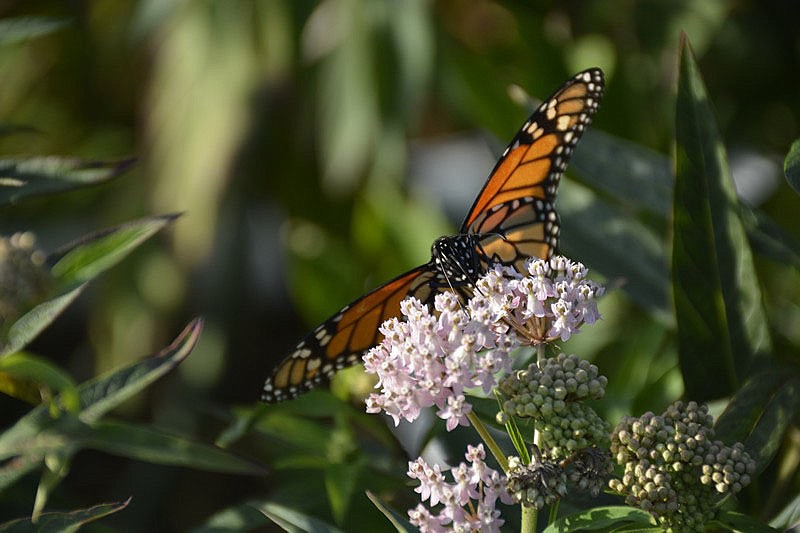Need courage? Look to butterflies. They live their short lives to the fullest after completely transforming themselves from a crawling caterpillar to a winged work of art. Some migrate hundreds of miles on fragile, paper-thin wings. Many gardeners help butterflies by offering nectar plants.
Nectar alone cannot sustain butterfly species. You may already know that caterpillars must feed on their species' host plant to grow and eventually become a butterfly. However, there isn't a simple one-to-one ratio of a certain species of flower hosting a certain species of butterfly. Not just flowers can play host; butterflies can lay eggs on their host trees, shrubs, herbs and more. Caterpillars are known for eating leaves, but some need to eat the flowers or buds instead. Some plants are hosts for more than one butterfly species, and most butterflies have more than one host plant. Sometimes they can have over a hundred hosts! Usually, these are all plant species found in the same genus.
For example, "milkweed for monarchs" is a popular slogan referring to the monarch butterfly's host plants, milkweeds. There are numerous milkweed species native to our region, though. "Excluding subspecies, there are 72 milkweed species native to the United States and Canada," reports the Xerces Society. The monarch's lookalike, the viceroy, needs members of the willow tree family, not milkweeds.
Swallowtail butterflies vary in their number of host plants. The black-and-white striped zebra swallowtail only has one host, our native pawpaw tree, but the yellow-and-black striped tiger swallowtail has many, including ash, wild cherry, magnolia, birch, cottonwood, willow, poplar, basswood and tulip trees. Sometimes it's easy to guess the host plant, as in the case of the spicebush swallowtail, which lays its eggs on the spicebush, but sassafras trees are their host, too. Research the exact name for the host species you prefer, since some common names like Dutchman's pipe refer to multiple types of plants and some are toxic to pipevine swallowtail caterpillars (which need pipevines that aren't toxic to them).
The goatweed leafwing predictably lays its eggs on goatweed but also a few other hosts. Plants in the nettle family host the red admiral butterfly. The "question mark" species of butterfly needs nettles and false nettles, too, but has more host plants than these, including some elm and hackberry trees.
One of the most common butterflies, painted ladies, have more than 100 host plants including thistles, hollyhock, mallow and various legumes. The eastern tailed blue (not the more intuitive sounding blue-tailed) caterpillar eats a variety of plants in the pea family including cow vetch, clover, alfalfa and wild pea. Another small blue butterfly, the spring azure, produces caterpillars that eat the flowers of woody shrubs and herbs. Some of its host plants are dogwood trees and New Jersey tea bushes. The red-spotted purple caterpillars also prefer woody plants, but they eat their hosts' leaves. These include the wild cherry, aspen, poplar, cottonwood and oaks.
A good field guide to check out is "Arkansas Butterflies and Moths" by Lori A. Spencer. There are also lots of printed brochures and online educational posters explaining which host plants are needed by your favorite kinds of butterflies, but due to space restrictions, these usually can't list all the possible hosts. Visit butterfliesandmoths.org to identify and learn more about butterflies and their host plants. By planting butterfly hosts, you can keep these gorgeous garden visitors around your home for far longer than with nectar flowers alone.
Amanda Bancroft is a writer, artist, and naturalist living in an off-grid tiny house on Kessler Mountain. She and her husband Ryan blog about their adventures and offer tips to those wanting to make a difference at www.RipplesBlog.org.


